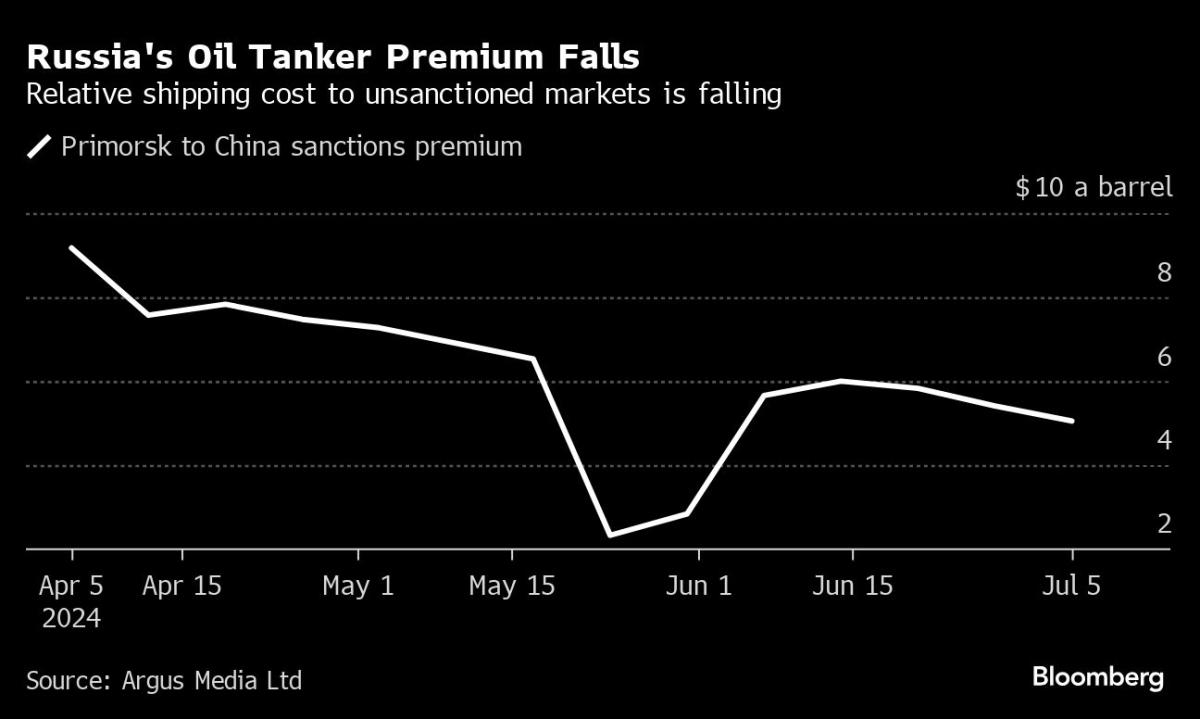
(Bloomberg) — Group of Seven sanctions aimed at depriving the Kremlin of petrodollars are failing in one of their key objectives: driving up the cost of delivering Russian oil.
Most Read from Bloomberg
The price of delivering the nation’s flagship Urals crude to customers in Asia from Russia’s Black Sea port of Novorossiysk has tumbled to the lowest since October, according to data from Argus Media Ltd. Even a theoretical cost — attributable only to sanctions — has sagged, the pricing agency estimates.
The slump allows Russian firms to grab a bigger slice of the revenue from every barrel of oil that they sell to customers in China and India, now by far the nation’s biggest markets since Europeans stopped buying to pressure Moscow over the war in Ukraine.
The weakness may disappoint western policymakers given that dozens of tankers previously engaged in the Russian oil trade have ground to a halt in the wake of sanctions imposed on the vessels by Group of Seven nations and their allies since October.
It now costs $7.2 million to deliver a million-barrel Russian Urals oil cargo to north China from Novorrossiysk, down by $3.2 million since early April, Argus’s data show.
The firm also splits out precisely how much of that cost is directly attributable to sanctions. That has slumped to $2.8 million, a plunge of $4 million over the same timespan.
Since October, there have been a steady stream of sanctions on vessels tied to Russia, including on Russia’s state-owned shipping company Sovcomflot PJSC and more recently on some vessels that were acquired as part of a so-called dark fleet of ships.
For vessels hauling crude from the Baltic to India the premium was $7.40 a barrel in April and is $4 today. There was a sharp drop — and an equally quick recovery — in May, before freight rates and the amount attributable to sanctions, began sliding again.
Russian oil at the price of export — and by the time it reaches customers in China and India — is now well above a Group of Seven price cap of $60 a barrel. It’s at about $75 a barrel in the Baltic and Black Sea, and then about $10 more by the time it gets to China and India, Argus’s figures show.
It was last below the price cap in early January at the point of export, meaning that no western service providers should — on paper at least — be providing services including shipping and insurance for the trade since then.
Most Read from Bloomberg Businessweek
©2024 Bloomberg L.P.
EMEA Tribune is not involved in this news article, it is taken from our partners and or from the News Agencies. Copyright and Credit go to the News Agencies, email news@emeatribune.com Follow our WhatsApp verified Channel





